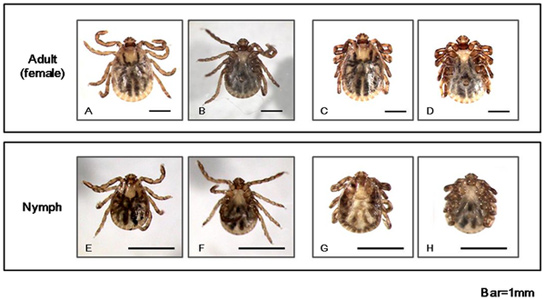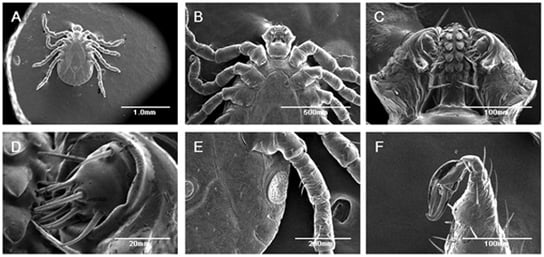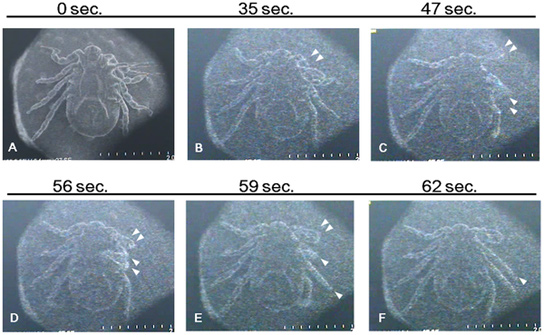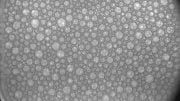
Haemaphysalis flava nymph
Haemaphysalis flava, a kind of tick, was observed under the intense rays of an electron scanning microscope and survived the experience. They may have just surpassed Tardigrades as the world’s hardiest animals, which can survive the vacuum and UV radiation of space.
H. flava surpass Tardigrades by not being dehydrated to survive vacuum. They have become the first organisms to be observed in an electron scanning microscope and survive. The researchers published their findings in the journal PLoS ONE.

(A) Whole body, (B) upper body, (C) capitulum, (D) 4th article, (E) spiracular plate, (F) claw and pulvilus of nymph are shown.
The ticks were discovered by Naohisa Tomosugi, of the Kanazawa Medical University, in Uchinada, Japan, and his colleagues. The ticks crawled through desiccator tubes into the electron scanning microscope.

Motion of a live tick under SEM.
The researchers speculate that H. flava stop breathing when exposed to the vacuum. Tomosogi and his team discovered that the electron beam did damage the ticks, but they didn’t die. This could mean that H. flava could be used as a model for biology of extreme conditions, like Mars or Titan.
After 30 minutes of exposure, the ticks were removed and placed in normal atmospheric pressure. They could still walk and survived for two days.
Reference: “Observation of Live Ticks (Haemaphysalis flava) by Scanning Electron Microscopy under High Vacuum Pressure” by Yasuhito Ishigaki, Yuka Nakamura, Yosaburo Oikawa, Yasuhiro Yano, Susumu Kuwabata, Hideaki Nakagawa, Naohisa Tomosugi and Tsutomu Takegami, 14 March 2012, PLoS ONE.
DOI: 10.1371/journal.pone.0032676









Be the first to comment on "Haemaphysalis Flava Hardy Enough to Survive Vacuum and Electron Beam"